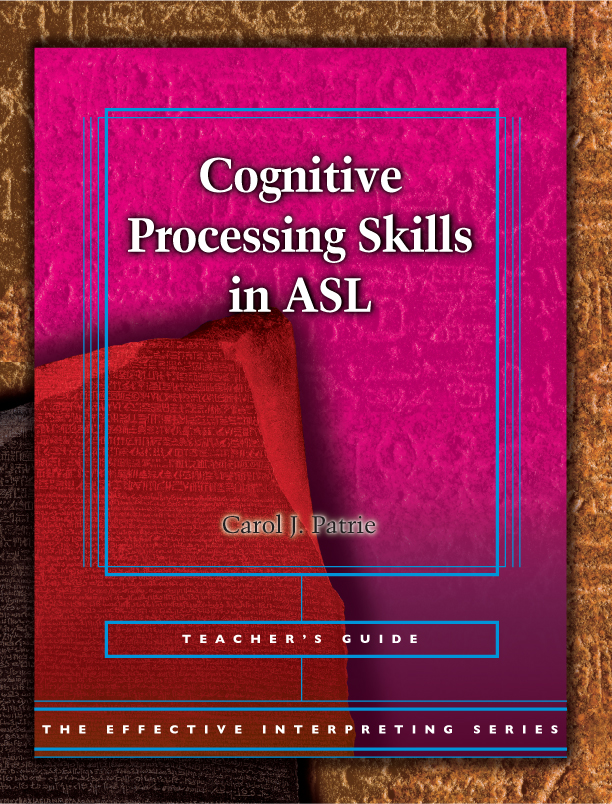
Cognitive Processing Skills in ASL
Effective cognitive processing within ASL is part of a strong foundation for the complex skill of simultaneous interpreting. Practicing cognitive processing within ASL improves linguistic flexibility and the ability to rapidly manage competing stimuli. These management strategies help reduce and increase effectiveness while interpreting. Check out the companion volume Cognitive Processing Skills in English to develop these skills in both languages.
Who is this book for? Interpreting students and their teachers as well as working interpreters can benefit from the study of this volume. It can also be used to earn RID CMP CEUs when you work with an approved RID sponsor.
Cognitive Processing Skills in ASL provides theoretical information as well as carefully sequenced exercises that increase in difficulty within each unit and also throughout the volume on the following topics:
- Comprehension of ASL
- Memory
- Repetition
- Fingerspelled Word and Number Recognition
- Pattern Inference
Each exercise includes:
- ASL video source material on DVD or via the DSP online library
- Study Questions
- The Five-Step Follow-up
The Five-Step Follow-Up is a unique method of self-analysis and encourages reflective practice and is included in each exercise.
The Teacher's Guide includes all of the information and material in the Study Set and:
- Discussion questions
- Suggestions for how to conduct the exercises
- Samples of appropriate responses to workbook questions
- The video source material is the same for both the Teacher's Guide and the Study Set